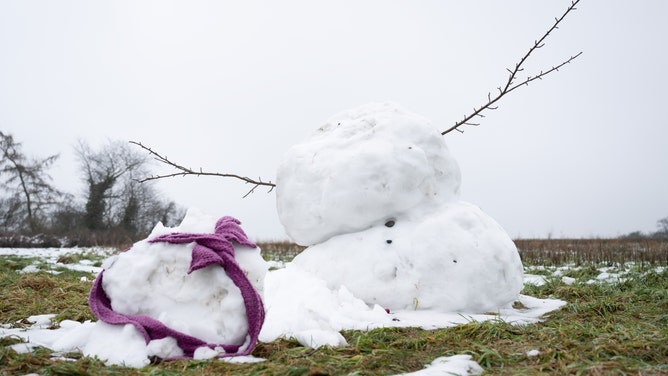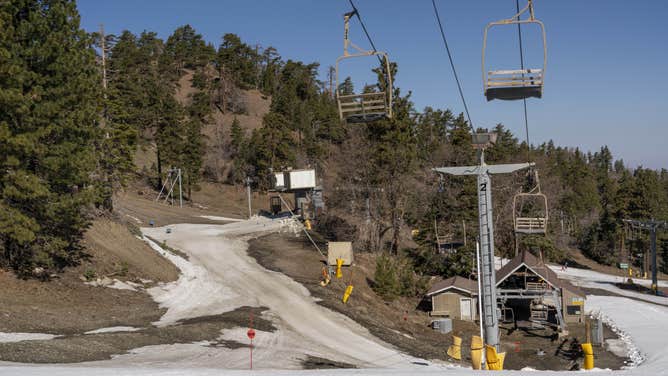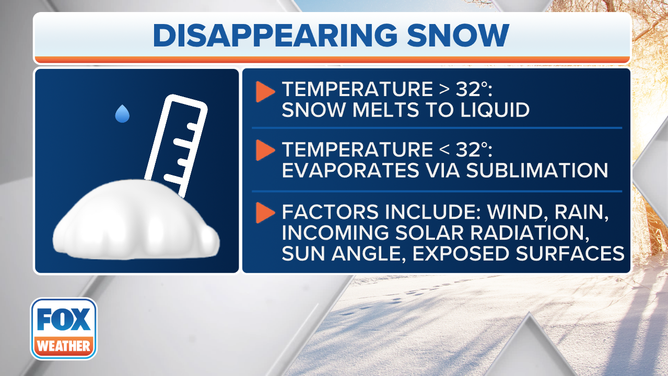How can snow melt when temperatures are below freezing?
Air temperatures are only a small factor in determining the amount of melting that will occur. More importantly, it's the heat energy from the sun that plays the largest role in how much snow will melt on a given day.
Which month is snowiest?
Which month is snowiest? The short answer: It depends on where you live.
If you live in a place that sees snow every winter, you might notice fresh snowfall melting off your roof or driveway, even on a cold day with temperatures below freezing.
While this certainly saves the hassle of picking up the snow shovel, how exactly does snow melt when temperatures are only in the teens or 20s?
Air temperatures are only a small factor in determining the amount of melting that will occur. More importantly, it's the heat energy from the sun that plays the largest role in how much snow will melt on a given day.

FILE – A snowman melts on a meadow.
(Sebastian Kahnert / Picture Alliance / Getty Images)
The amount of heat energy received from the sun is determined by a surface's albedo. According to NASA, albedo is the fraction of sunlight that a surface reflects.
Snow has a high albedo, which means it reflects a large portion of the energy it receives from the sun back into space. However, the small amount of heat energy that a blanket of snow does absorb from the sun can still be enough to increase its temperature above 32 degrees, even if surrounding air temperatures are much lower.
So that means the incoming energy from the sun is able to make up for the below-freezing temperatures surrounding the snow covering your roof or driveway, allowing it to melt even on a cold day before you have the opportunity to grab the snow shovel.

Snow melts around chair lifts at Mountain High Resort in Wrightwood, California, on April 6, 2022.
(Kyle Grillot / Bloomberg / Getty Images)
The sun angle, which varies throughout the year, is the main factor in determining how much energy is received at the Earth's surface. We receive the least amount of energy near the winter solstice in December when the sun angle is lowest in the sky, while the greatest amount of energy is received near the summer solstice in June when the sun angle is highest.
Therefore, you're less likely to see the snow melt off your roof or driveway early in the winter because the sun is much less of a factor. However, by February and March, the sun angle is significantly higher than in December and January, so snowmelt on a below-freezing day is much more common later in the winter, particularly on a sunny day.
SNOW SHOVELING SAFETY: THE EASIEST AND SAFEST WAY TO CLEAR THAT DRIVEWAY AFTER A BIG SNOWSTORM

Factors contributing to snowmelt on a day with temperatures below 32 degrees.
(FOX Weather)
